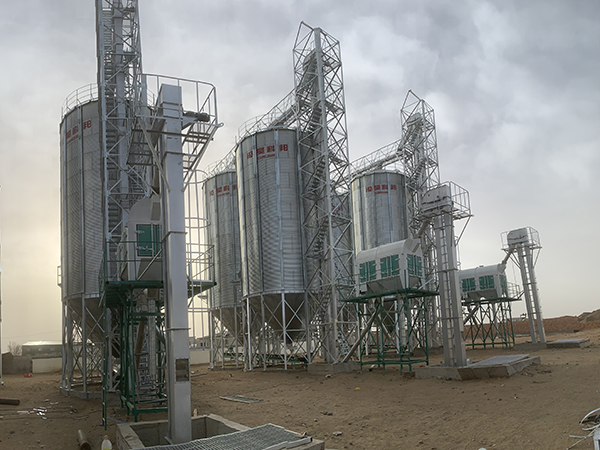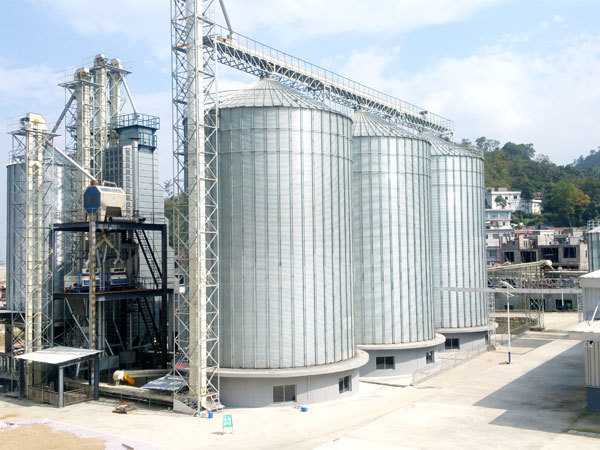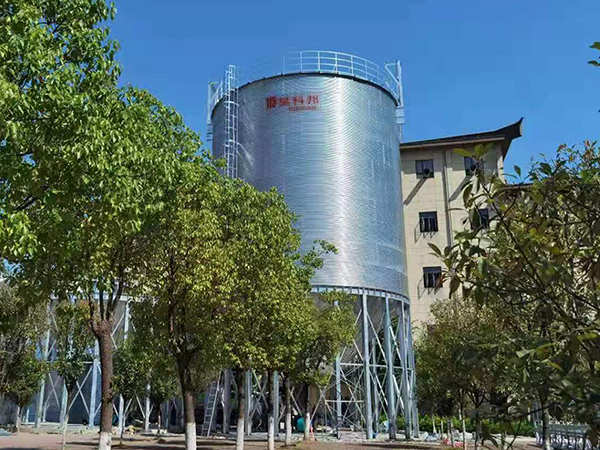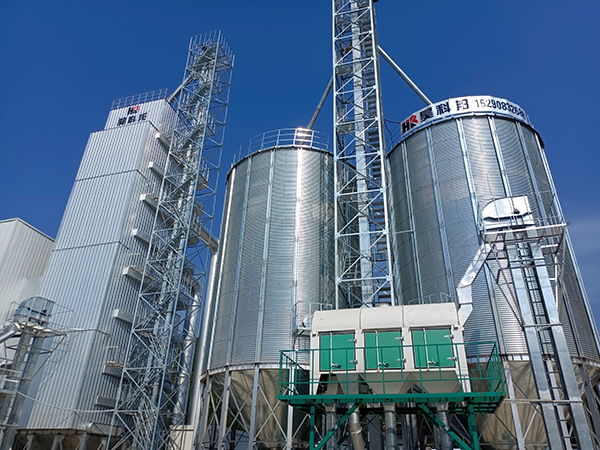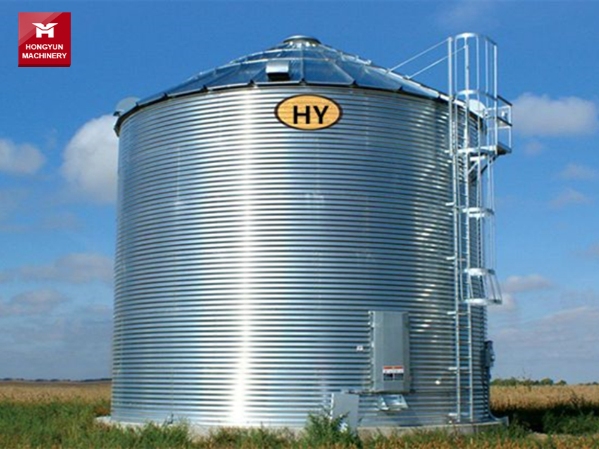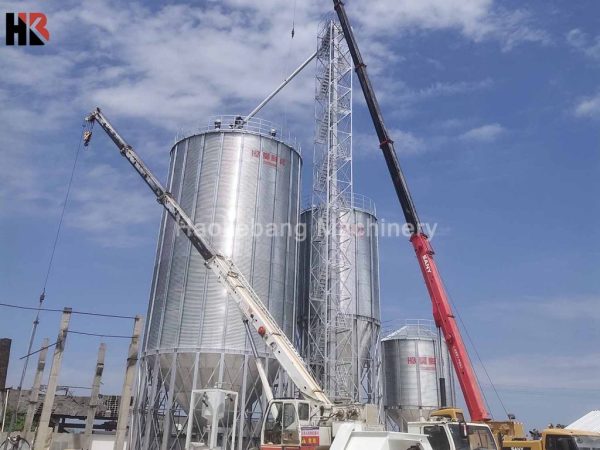Barley Silo
A barley silo is a specialized storage facility designed for holding barley. These silos typically have large capacities and employ efficient storage technologies to ensure the long-term preservation and quality maintenance of the barley.
Barley Silo Introduction
A barley silo is a specialized storage facility designed for holding barley. These silos typically have large capacities and employ efficient storage technologies to ensure the long-term preservation and quality maintenance of the barley. The design of a barley silo often takes into account the characteristics of barley, such as its sensitivity to moisture and temperature, as well as the need to prevent pests and mold.
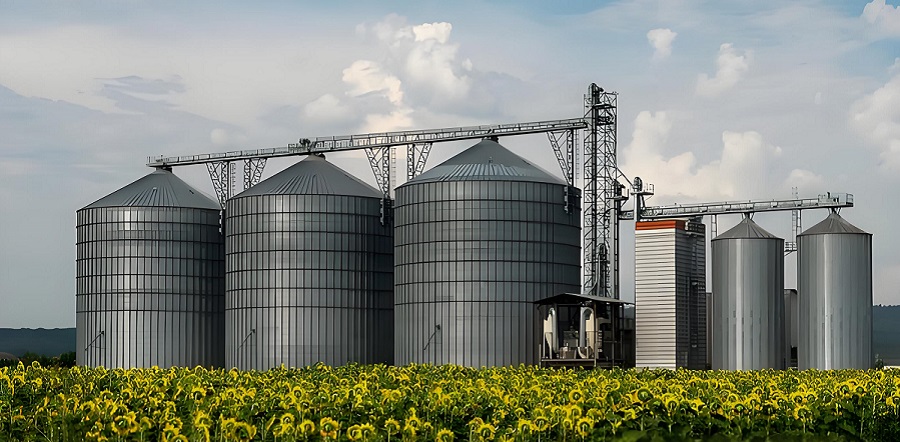
Barley Silo Features
Capacity Design
Barley silos usually have substantial storage capacities to accommodate thousands or even tens of thousands of tons of barley. For instance, the grain terminal at Dongjiakou Port has 26 grain bins in its first phase, each capable of storing 10,000 tons of grain, indicating the large storage space available for barley.
Loading and Unloading Technology
To improve efficiency, barley silos are often equipped with advanced loading and unloading technologies and automated systems. The grain terminal at Dongjiakou Port in Qingdao, for example, features an automated grain loading and unloading system that can handle the entire process from storage to loading and unloading.
Environmental Control
Inside the silo, there are typically temperature and humidity control systems to maintain a suitable storage environment and prevent the grain from spoiling. These systems use temperature sensors to monitor the conditions in real-time and adjust the temperature within the silo to ensure the safety of the grain.
Pest and Mold Prevention
To prevent pests and mold, barley silos may employ various protective measures, such as nitrogen gas injection systems that suppress the reproduction of insects by depriving them of oxygen.
Monitoring System
Modern barley silos may be equipped with advanced monitoring systems that provide 360-degree surveillance and real-time remote data viewing and analysis to ensure the safety of the grain and to promptly address any anomalies.
Construction Scale
The construction scale of a barley silo may be designed based on actual needs and expected storage volumes. For example, the third phase of the designated grain storage and control site at Dongjiakou Port began construction in early 2023, with the addition of 16 new 10,000-ton capacity bins, bringing the total number to 68, further enhancing the port’s grain distribution capabilities and silo operation efficiency.
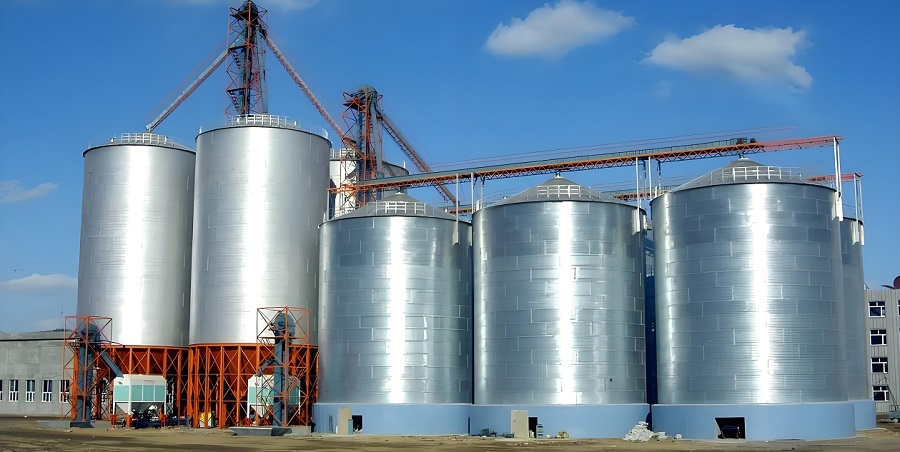
barley silo composition
Foundation
The foundation of a barley silo is the supporting structure that is usually engineered to be robust and stable, made of concrete or a steel structure platform. It ensures the silo remains stable under full load and wind loads, preventing settlement or tilting.
Silo Body
The main part of the silo is the cylindrical body, often constructed from galvanized steel plates welded into corrugated sheets or flat panels, or made from prestressed concrete. The interior is smooth to facilitate the flow of barley and is well-sealed to prevent moisture, air, and pests from entering.
Roof
The roof covers the top of the silo and is designed to be waterproof, windproof, and sun-resistant. It may feature various shapes, such as a sloped, flat, or domed roof. The roof has necessary openings, such as inspection hatches, ventilation ports, and interfaces for temperature and humidity sensors, while ensuring effective drainage of rainwater.
Ventilation System
To maintain suitable temperature and humidity conditions inside the silo, preventing the barley from heating, molding, or oxidizing, the silo is typically equipped with a ventilation system. This may include natural ventilation, forced ventilation, and specialized ventilation equipment that regulates the environment by introducing dry air or expelling humid air as needed.
Inlet and Outlet Devices
The inlet is located at the top or side of the silo for receiving and importing barley. The outlet is at the bottom of the silo, possibly featuring a central discharge cone, a ring channel, or a gravity self-flow outlet design, ensuring the barley can be discharged smoothly and controllably. The outlet may also be equipped with anti-clogging devices to prevent blockages.
Measurement and Monitoring Equipment
This includes sensors for measuring the height of the material in the silo, as well as temperature and humidity sensors, along with associated data acquisition and transmission systems. These are used to monitor key parameters such as the barley inventory, temperature, and humidity in real-time, providing a basis for inventory management and maintenance decisions.
Auxiliary Facilities
Such as ladders, working platforms, safety railings, fire protection facilities, lightning protection systems, etc., facilitate and ensure the safety of personnel entering and operating the silo for daily inspections, maintenance, and emergency situations.
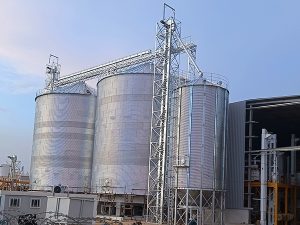

Barley Silo Advantages
Space Efficiency
The vertical design of silos allows for the storage of large quantities of barley on limited land areas, making them suitable for situations where land resources are scarce or large-scale centralized storage is required.
Minimization of Grain Waste
The design of silos helps to minimize the loss and waste of grains during storage. Through efficient loading and unloading systems and precise control, the efficient utilization of grains is ensured.
Enhanced Grain Quality
Silo are typically equipped with advanced pre-cleaning and drying technologies, which help maintain the quality of stored barley and reduce quality degradation due to changes in humidity and temperature.
Reduced Storage Costs
Although the initial investment in the design and construction of silos may be high, their efficient operation and maintenance can lead to reduced overall storage costs in the long run.
Environmental Control
The design of silos allows for precise control of the internal environment, including temperature, humidity, and ventilation, thereby creating ideal storage conditions for barley and reducing risks associated with environmental changes.
Automation and Intelligent Control
Advanced level monitoring systems are employed to achieve real-time and precise monitoring of barley inventory, facilitating timely replenishment or dispatch, and enhancing storage management efficiency.
Adaptability
Silos can be designed and constructed to meet different geographical and climatic conditions, accommodating a variety of environmental and storage needs.
Durability and Safety
The structural design of silos takes into account durability and safety, enabling them to withstand natural disasters such as storms and floods, ensuring the safety of stored barley.
Ease of Management and Operation
The design of silos facilitates the use of large machinery for loading and unloading operations, enabling rapid in-and-out storage, reducing labor costs, and increasing work efficiency.
Improved Recovery Rate
The design of silos helps to improve the recovery rate of grains, ensuring that losses are minimized during the unloading process.
Application scope of Barley Silo
Coban Silo is widely used for grains storage such as wheat, corn, soybean, paddy, rice, soybean meal, barley, malt, sunflower seeds, rapeseeds, peanuts, flour, and other powder materials, oat, special Silo, and seeds, etc.

Barley Silo technical parameters
Scientifically speaking, the Silo capacity should be measured with volume (m3). Even in the same grain Silo, the storage tons will be different for different grains with different densities. The following table is calculated based on a Silo density of 0.75kg/m3, and surely HKB customizes Silo systems unique for you.
| Most Popular Hopper Bottom Steel Silo Technical Specifications | ||||||||
| Capacity | 50Ton | 100Ton | 150Ton | 200Ton | 300Ton | 500Ton | 1000Ton | 1500Ton |
| Model | TCZK
03605 |
TCZK
04507 |
TCZK
05507 |
TCZK
06406 |
TCZK
07307 |
TCZK
07313 |
TCZK
11010 |
TCZK
12811 |
| Diameter(m) | 3.667 | 4.584 | 5.500 | 6.417 | 7.334 | 7.334 | 11.000 | 12.834 |
| Total Height(m) | 9.56 | 12.53 | 13.25 | 12.85 | 14.70 | 21.42 | 20.95 | 23.51 |
| Volume(m³)
Density:0.75ton/m³ |
69 | 150 | 222 | 273 | 415 | 699 | 1346 | 2039 |
| Most Popular Flat Bottom Steel Silo Technical Specifications | ||||||||
| Capacity | 1000Ton | 1500Ton | 2000Ton | 2500Ton | 3000Ton | 5000Ton | 8000Ton | 10000Ton |
| Model | TCK
10014 |
TCK
11915 |
TCK
13715 |
TCK
15514 |
TCK
15518 |
TCK
18321 |
TCK
24718 |
TCK
25621 |
| Diameter(m) | 10.084 | 11.918 | 13.750 | 15.584 | 15.584 | 18.334 | 24.751 | 25.668 |
| Total Height(m) | 18.69 | 20.34 | 20.87 | 20.30 | 24.78 | 28.60 | 26.99 | 30.60 |
| Volume(m³)
Density: 0.75ton/m³ |
1335 | 2009 | 2701 | 2467 | 4145 | 6693 | 10879 | 13484 |
After-sale Service
- – HKB provides advanced grain safety storage technology to assure your grain silo 100% quality stability.
- – grain silo Quality guarantee is one year after installation and commissioning or 18 months after leaving China Port. Maturity is the first.
- – 7 days x 24 hours service, within 24 hours reply/solve of any technical issues upon request.
- – Routinely telephone track to remove all might be problems grain silo or issues guarantying the whole system grain silo long-lasting safety and reliability.
- – HKB will consider all other needs like customs clearance, sea delivery, insurance, customs tax benefit plan, documentation, etc. So our respected Users feel so relaxed and easy to get the grain silo system well.

